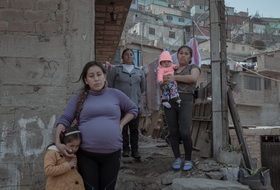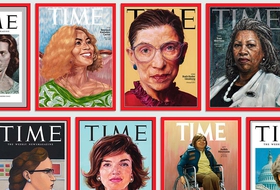
One in three women have suffered physical or sexual violence. With contributions from Europe, Africa, Asia and Latin America, we look at how this shadow pandemic affects every corner of the world.
The American stock photo agency Getty Images launched on Monday 10th February the Lean In Collection in collaboration with the non-governmental organisation Lean In created by Facebook Chief Operating Officer Sheryl Sandberg. With more than 2,500 pictures and the promise to add more every month, the aim of this new initiative by Getty is to
The American stock photo agency Getty Images launched on Monday 10th February the Lean In Collection in collaboration with the non-governmental organisation Lean In created by Facebook Chief Operating Officer Sheryl Sandberg.
With more than 2,500 pictures and the promise to add more every month, the aim of this new initiative by Getty is to break up the stereotype of women that circulates on the Internet. For example, smiling half-naked women eating salad on their sofa or women pushing the keys on their cutting-edge laptops while lying in bed, in clearly uncomfortable positions.
Due to these unrealistic pictures the New York Magazine commented in its article entitled Feminism, according to stock photography that, as things stand “maybe what a woman really needs is a stock agency of one’s own”.
The idea to create a collection of stock photos that aims to show women as they really are on the Internet was born out of Pam Grossman’s request. The director of visual trends at Getty Images, indeed, called for a change in the way girls and women are looked at in the media. And that’s how her collaboration with Sandberg began.
“This is such a big passion project for all of us, and cheesy as it sounds, by showing people powerful images of women, we thought maybe we could actually change the world”, Grossman told Buzzfeed.
“Woman” is the most commonly searched term on the Getty Images website according to data provided by the agency. But while in 2007 the most seen picture was one portraying a woman lying on bed and covered with a bedsheet only, today the most downloaded photo is that of a woman riding a train and scanning the horizon. Ah, as the Atlantic underlines, she is completely dressed.
Siamo anche su WhatsApp. Segui il canale ufficiale LifeGate per restare aggiornata, aggiornato sulle ultime notizie e sulle nostre attività.
![]()
Quest'opera è distribuita con Licenza Creative Commons Attribuzione - Non commerciale - Non opere derivate 4.0 Internazionale.
One in three women have suffered physical or sexual violence. With contributions from Europe, Africa, Asia and Latin America, we look at how this shadow pandemic affects every corner of the world.
The Istanbul Convention against gender-based and domestic violence marks its tenth anniversary. We look at what it is, who its signatories are, and what the future might hold.
European Commission President Ursula von der Leyen reminded us of the gravity of violence against women around the world, and of the Istanbul Convention’s utmost importance.
President Erdoğan has pulled Turkey out of the Istanbul Convention, key in the fight against gender violence, claiming that it favours the LGBT community rather than family values.
Violence against women in Peru has increased as a result of Covid-19 lockdowns. 14,912 people were reported missing from January to November 2020, more than half of them minors and 64 per cent women. People have been confined to their homes for months, many forced to endure poor physical, economic and social conditions. A situation that
Joys Estefani Qqueccaño Huamani, 24, disappeared from her rural community in Peru on 9 October. Her family began looking for her independently of the authorities and despite the resistance of relatives of Joys Estefani’s ex-partner Arturo Ccana Condori, 32, charged with committing violence against her on 28 September, eleven days before Joys Estefani disappeared. Photos
Costa Rica celebrated its first same-sex marriage when two women, Alexandra Quiros and Dunia Araya, celebrated their wedding: an “extraordinary moment”.
The pandemic and its restrictions are affecting everyone, without exceptions. However factors like housing, income inequalities, gender, access to technology and working conditions are influencing how people experience the health crisis.
Time magazine’s 100 Women of the Year project sheds light on influential women’s stories, from Amelia Earhart to Greta Thunberg. A selection of some of the greats for International Women’s Day.







